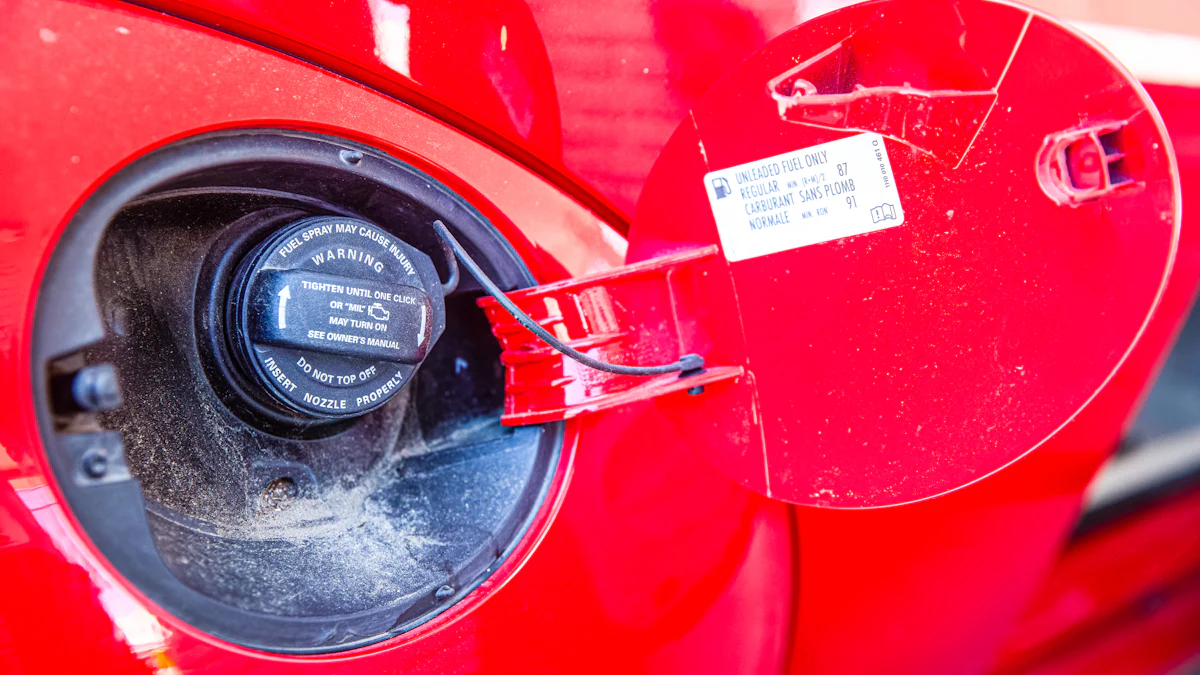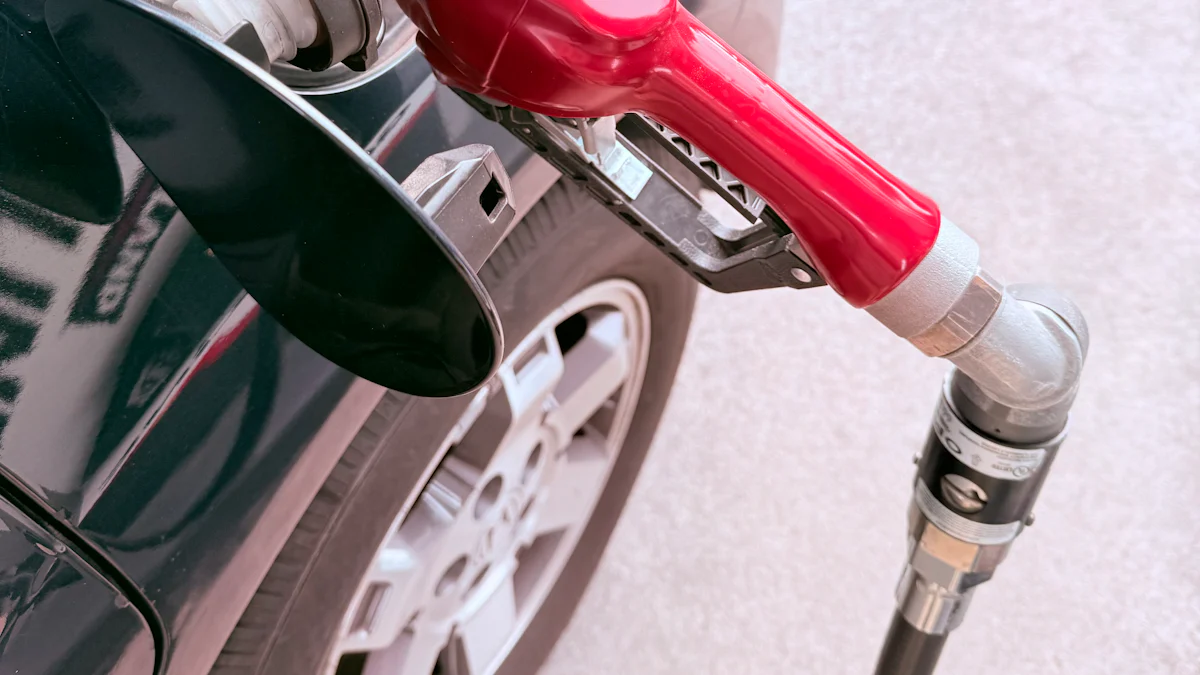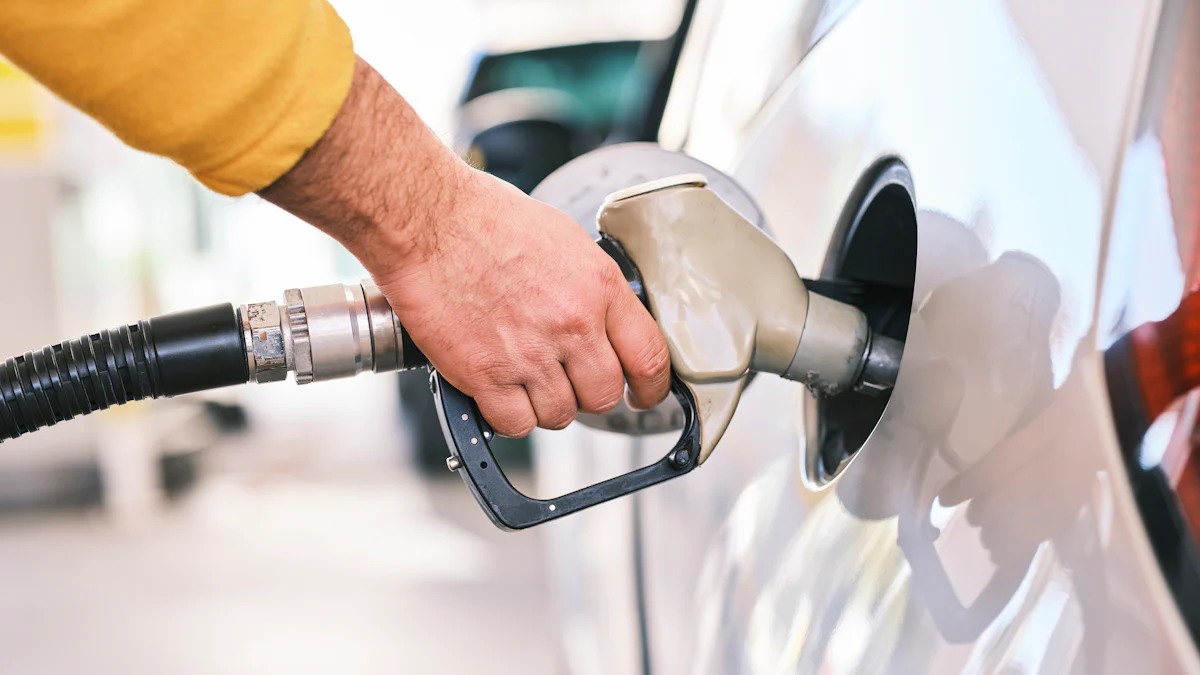
The fuel filler pipe plays a vital role in your Infiniti vehicle. It serves as the channel that connects the fuel tank to the fuel door, allowing you to safely and efficiently refuel your car. This component ensures that gasoline flows smoothly into the tank without leaks or spills. A properly functioning fuel filler pipe is essential for maintaining fuel system integrity and preventing harmful emissions. By keeping this part in good condition, you safeguard your vehicle’s performance and ensure a safer driving experience.
Key Takeaways
- The fuel filler pipe is essential for safe and efficient refueling, preventing leaks and harmful emissions.
- Common signs of a damaged fuel filler pipe include gasoline odors, fuel leaks, and difficulty refueling.
- Regular inspections and maintenance can help identify issues early, ensuring your vehicle remains safe and efficient.
- When replacing the fuel filler pipe, consider OEM parts for guaranteed compatibility or aftermarket options for cost savings.
- Replacement costs can vary significantly; OEM parts range from
100to300, while aftermarket options are typically
50to150.
- You can choose between professional installation for peace of mind or a DIY approach to save on labor costs, depending on your comfort level.
- Preventive measures, such as avoiding overfilling and regular cleaning, can extend the lifespan of your fuel filler pipe.
Importance of the Fuel Filler Pipe

Function of the Fuel Filler Pipe
The fuel filler pipe serves as the essential link between the fuel tank and the fuel door. When you refuel your Infiniti, this pipe ensures that gasoline flows directly into the tank without leaks or interruptions. It prevents fuel from spilling, which protects both your vehicle and the environment. The pipe also plays a role in maintaining proper pressure within the fuel system. This pressure is necessary for efficient fuel delivery to the engine. Without a functioning fuel filler pipe, you might experience issues like fuel vapor leaks or difficulty refueling.
Additionally, the fuel filler pipe helps reduce harmful emissions. It keeps fuel vapors contained, ensuring they do not escape into the atmosphere. This function aligns with environmental regulations and contributes to cleaner air. By understanding how this component works, you can appreciate its importance in your vehicle’s overall operation.
Why It’s Critical for Vehicle Performance and Safety
The fuel filler pipe directly impacts your vehicle’s performance and safety. A damaged or worn-out pipe can lead to fuel leaks, which waste gasoline and increase the risk of fire. Leaks may also trigger the check engine light, signaling a problem that requires immediate attention. If left unaddressed, these issues can compromise your car’s reliability and efficiency.
From a safety perspective, the fuel filler pipe ensures that fuel is delivered securely to the tank. It prevents exposure to flammable vapors, reducing the chance of accidents. For Infiniti vehicles, this component is designed to meet high standards of durability and performance. Keeping it in good condition ensures that your car operates smoothly and safely.
Common Issues with Fuel Filler Pipes

Signs of Wear and Damage
Your fuel filler pipe can show signs of wear over time. Recognizing these signs early helps you avoid costly repairs. One common indicator is the smell of gasoline around your vehicle. This could mean the pipe has developed cracks or leaks. You might also notice fuel dripping or pooling under your car after refueling. These leaks not only waste fuel but also pose safety risks.
Another sign to watch for is difficulty refueling. If the pump keeps shutting off or fuel spills during refueling, the pipe might be clogged or damaged. Rust or corrosion on the pipe’s surface is another red flag. Exposure to moisture and road salt often causes this issue, especially in older vehicles. A check engine light may also illuminate if the pipe fails to contain fuel vapors properly. Addressing these problems promptly ensures your vehicle remains safe and efficient.
Specific Problems in Infiniti Models
Infiniti vehicles, like any other brand, can face unique challenges with their fuel filler pipes. Older Infiniti models, such as the G35, often experience rust-related issues. This happens because the pipe is exposed to harsh environmental conditions over time. Rust weakens the pipe, making it prone to leaks and structural failure.
Some Infiniti models may also encounter problems with the pipe’s seals. A worn or damaged seal can lead to fuel vapor leaks, which might trigger the check engine light. Additionally, certain models have reported issues with the pipe’s alignment. Misalignment can cause difficulties during refueling, leading to frustration and wasted time.
Infiniti’s high-performance vehicles demand durable components. However, even with quality materials, wear and tear are inevitable. Regular inspections and maintenance help you identify these specific problems early. By addressing them, you ensure your Infiniti continues to deliver the performance and reliability you expect.
Replacement Options for Fuel Filler Pipes
When to Replace a Fuel Filler Pipe
You should replace the fuel filler pipe when it shows clear signs of damage or wear. Cracks, leaks, or rust on the pipe indicate that it can no longer function properly. If you notice gasoline odors around your vehicle or experience difficulty refueling, these are strong indicators that the pipe needs replacement. A damaged pipe may also trigger the check engine light, signaling issues with fuel vapor containment.
Timely replacement prevents further complications. Ignoring a faulty fuel filler pipe can lead to fuel wastage, increased emissions, and potential safety hazards. Regular inspections help you identify problems early. If your Infiniti is an older model, such as the G35, you should pay extra attention to rust or corrosion, as these issues are more common in aging vehicles. Acting quickly ensures your car remains safe and efficient.
OEM vs Aftermarket Options
When replacing the fuel filler pipe, you have two main options: OEM (Original Equipment Manufacturer) parts or aftermarket alternatives. OEM parts are designed specifically for your Infiniti model. They meet the manufacturer’s quality standards and ensure a perfect fit. For example, Infiniti offers OEM fuel filler pipes like the 2017-2020 Infiniti Q60 Filler Pipe (part number 17221-5CA0A). These parts provide reliability and durability, making them a trusted choice.
Aftermarket options, on the other hand, are produced by third-party manufacturers. They often cost less than OEM parts and may offer additional features, such as corrosion-resistant materials. For instance, the Dorman 577-395 Fuel Filler Neck is a popular aftermarket option for Infiniti models. While aftermarket parts can be a budget-friendly choice, you should ensure they are compatible with your vehicle and meet quality standards.
Choosing between OEM and aftermarket parts depends on your priorities. If you value guaranteed compatibility and long-term reliability, OEM parts are ideal. If you want to save money and explore alternative features, aftermarket options may suit your needs. Research both options carefully to make an informed decision.
Costs and Installation
Typical Costs of Replacement
Replacing a fuel filler pipe can vary in cost depending on your Infiniti model and the type of replacement part you choose. OEM (Original Equipment Manufacturer) fuel filler pipes typically range from
100to300. For example, the 2017-2020 Infiniti Q60 Filler Pipe costs around
256.98,whilethe2016−2017InfinitiQX50FillerPipeispricedatapproximately114.98. These parts are designed to meet Infiniti’s quality standards, ensuring durability and compatibility.
Aftermarket options often provide a more budget-friendly alternative. Prices for these parts usually range from
50to150. For instance, the Dorman 577-395 Fuel Filler Neck offers a reliable replacement option at a lower cost. However, you should carefully evaluate the quality and compatibility of aftermarket parts before purchasing. While they may save you money upfront, poorly made parts could lead to additional expenses in the long run.
When budgeting for a replacement, consider additional costs such as shipping fees or taxes. If you plan to hire a professional for installation, factor in labor charges as well. Understanding these costs helps you make an informed decision and avoid unexpected expenses.
Professional Installation vs DIY
You have two main options for installing a new fuel filler pipe: hiring a professional or doing it yourself. Professional installation ensures the job is done correctly and efficiently. Mechanics have the tools and expertise to handle the replacement process, reducing the risk of errors. Labor costs for professional installation typically range from
50to150, depending on the complexity of the job and your location.
If you prefer a hands-on approach, you can opt for a DIY installation. This option saves you money on labor costs and gives you the satisfaction of completing the task yourself. Replacing a fuel filler pipe usually involves removing the old pipe, attaching the new one, and securing it with clamps or bolts. Some Infiniti models allow easy access to the pipe without dropping the fuel tank, making the process more manageable.
Before attempting a DIY installation, ensure you have the necessary tools and follow the manufacturer’s instructions carefully. Watch tutorial videos or consult repair manuals for guidance. If you encounter difficulties or lack confidence in your skills, seek professional help to avoid damaging your vehicle.
Choosing between professional installation and DIY depends on your budget, experience, and comfort level. Professional services offer convenience and peace of mind, while DIY provides a cost-effective solution for those with mechanical knowledge.
Maintenance Tips for Fuel Filler Pipes
Preventing Damage and Wear
Taking proactive steps can help you prevent damage to your fuel filler pipe. Regular inspections are essential. Check the pipe for visible signs of rust, cracks, or corrosion. These issues often develop due to exposure to moisture, road salt, or debris. Cleaning the area around the fuel filler pipe can also reduce the risk of wear. Dirt and grime can accumulate over time, leading to blockages or surface damage.
Avoid overfilling your fuel tank. Excess fuel can spill into the filler pipe, causing unnecessary strain and potential leaks. Use the correct fuel type recommended for your Infiniti model. Incorrect fuel can lead to chemical reactions that may weaken the pipe’s material. Additionally, ensure the fuel cap is tightly secured after every refueling session. A loose or damaged cap can allow contaminants to enter the pipe, accelerating wear.
Parking your vehicle in a covered or sheltered area can protect the fuel filler pipe from harsh weather conditions. Extreme temperatures and prolonged exposure to sunlight can degrade the pipe’s material. If you live in an area with heavy snowfall or frequent rain, consider applying a protective coating to the pipe. This extra layer can shield it from moisture and road salt, extending its durability.
Extending the Lifespan of the Fuel Filler Pipe
Proper maintenance practices can significantly extend the lifespan of your fuel filler pipe. Schedule routine check-ups with a trusted mechanic. Professionals can identify early signs of wear and address them before they escalate into major problems. During these inspections, ask the mechanic to examine the seals and connections around the pipe. Tight and secure seals prevent fuel vapor leaks and maintain system efficiency.
Use high-quality fuel to minimize residue buildup inside the pipe. Low-grade fuel often contains impurities that can clog or corrode the pipe over time. If you notice any unusual smells or difficulty refueling, address the issue promptly. Ignoring minor problems can lead to costly repairs or replacements later.
Driving habits also play a role in maintaining the fuel filler pipe. Avoid aggressive driving on rough roads, as vibrations and impacts can loosen the pipe’s connections. When refueling, handle the nozzle carefully to prevent accidental damage to the pipe’s opening. Small precautions like these can make a big difference in preserving the pipe’s condition.
By following these maintenance tips, you ensure the fuel filler pipe continues to function effectively. A well-maintained pipe supports your vehicle’s performance, reduces emissions, and enhances safety.
The fuel filler pipe plays a crucial role in maintaining your Infiniti’s performance and safety. It ensures efficient fuel delivery while preventing leaks and harmful emissions. Recognizing common issues like rust, leaks, or alignment problems helps you address them early. Exploring replacement options, whether OEM or aftermarket, allows you to choose the best fit for your needs. Regular maintenance, such as inspections and proper refueling habits, extends its lifespan. If you notice signs of damage, consult a mechanic or replace the part promptly to keep your vehicle running smoothly.
FAQ
What is a fuel filler pipe, and why is it important?
The fuel filler pipe, also called the fuel filler neck, connects the fuel tank to the fuel door. It allows you to refuel your vehicle safely and efficiently. This component ensures gasoline flows into the tank without leaks or spills. It also helps contain fuel vapors, reducing harmful emissions and maintaining environmental standards.
How can I tell if my fuel filler pipe is damaged?
You can identify a damaged fuel filler pipe by several signs:
- A strong smell of gasoline around your vehicle.
- Fuel dripping or pooling under your car after refueling.
- Difficulty refueling, such as the pump shutting off frequently.
- Visible rust, cracks, or corrosion on the pipe.
- A check engine light triggered by fuel vapor leaks.
If you notice any of these issues, inspect the pipe or consult a mechanic.
Can I drive with a damaged fuel filler pipe?
Driving with a damaged fuel filler pipe is not recommended. A faulty pipe can cause fuel leaks, increasing the risk of fire and wasting gasoline. It may also lead to higher emissions and trigger the check engine light. Addressing the issue promptly ensures your safety and prevents further damage to your vehicle.
How often should I inspect my fuel filler pipe?
You should inspect your fuel filler pipe during routine vehicle maintenance or at least once a year. Regular inspections help you identify early signs of wear, such as rust or leaks. If you live in an area with harsh weather conditions or use your vehicle frequently, consider more frequent checks.
What are the benefits of using an OEM fuel filler pipe?
OEM (Original Equipment Manufacturer) fuel filler pipes offer several advantages:
- They are designed specifically for your Infiniti model, ensuring a perfect fit.
- They meet the manufacturer’s quality standards, providing durability and reliability.
- They maintain your vehicle’s performance and safety.
Although OEM parts may cost more than aftermarket options, their quality and compatibility make them a trusted choice.
Are aftermarket fuel filler pipes reliable?
Aftermarket fuel filler pipes can be reliable if you choose high-quality options. Many aftermarket parts, like the Dorman 577-395 Fuel Filler Neck, are made from durable materials and offer a cost-effective alternative to OEM parts. However, you should verify compatibility with your Infiniti model and ensure the part meets quality standards before purchasing.
Can I replace the fuel filler pipe myself?
Yes, you can replace the fuel filler pipe yourself if you have the necessary tools and mechanical knowledge. The process typically involves removing the old pipe, attaching the new one, and securing it with clamps or bolts. Some Infiniti models allow easy access to the pipe, making DIY replacement manageable. If you are unsure about the process, seek professional assistance to avoid errors.
How much does it cost to replace a fuel filler pipe?
The cost of replacing a fuel filler pipe depends on the type of part and your Infiniti model:
- OEM parts range from
100to300.
- Aftermarket options usually cost between
50and150.
Labor costs for professional installation typically range from
50to150. DIY replacement can save you money on labor but requires time and effort.
How can I prevent damage to my fuel filler pipe?
You can prevent damage to your fuel filler pipe by following these tips:
- Inspect the pipe regularly for rust, cracks, or corrosion.
- Clean the area around the pipe to remove dirt and debris.
- Avoid overfilling your fuel tank to prevent unnecessary strain.
- Use the correct fuel type recommended for your Infiniti model.
- Park in a sheltered area to protect the pipe from harsh weather.
These practices help maintain the pipe’s condition and extend its lifespan.
What should I do if my fuel filler pipe is leaking?
If your fuel filler pipe is leaking, address the issue immediately. A leaking pipe poses safety risks and wastes fuel. Inspect the pipe for visible damage, such as cracks or rust. Replace the pipe if necessary. Consult a mechanic if you are unsure about the extent of the damage or need professional assistance.
Post time: Dec-27-2024





